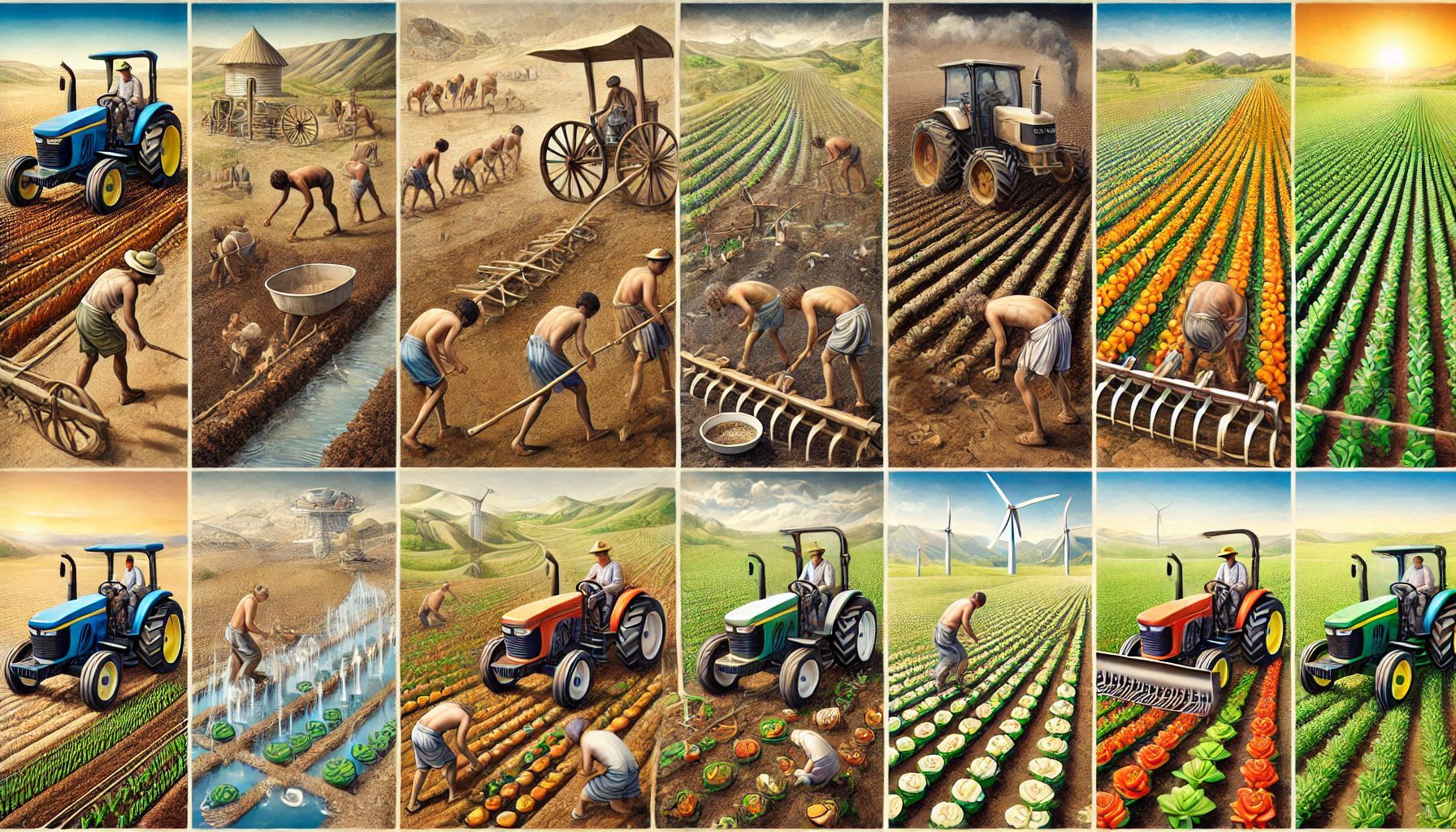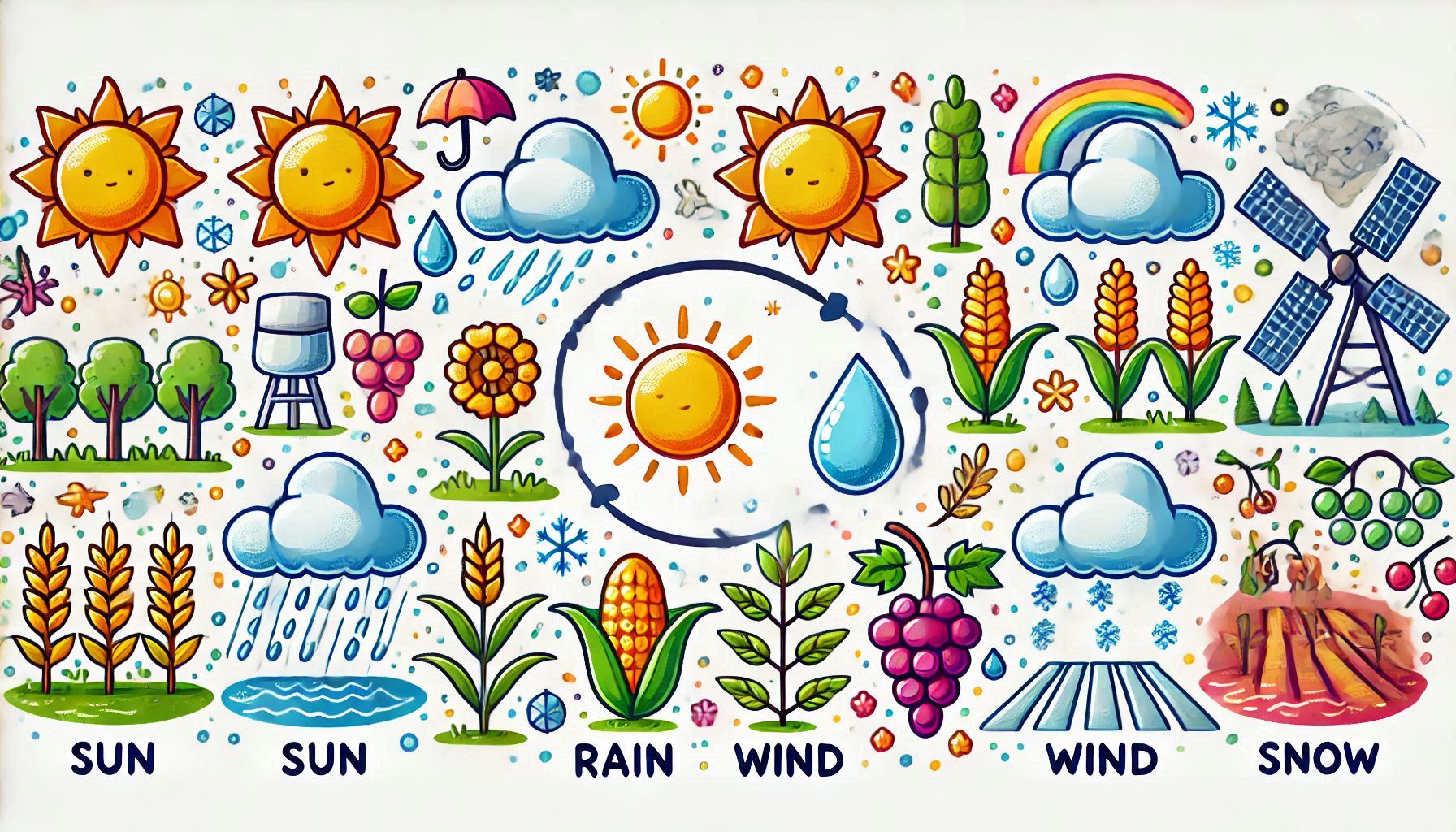Agro meteorology One Liner
Here are 100 important one-liner facts about agro-meteorology and related topics:
- Meteorology is the study of the atmosphere, its processes, and weather patterns.
- The word “meteorology” comes from Greek, where “meteoro” means above the Earth’s surface and “logy” means science.
- Meteorology blends physics and geography to study air behavior.
- Weather refers to the physical state of the atmosphere at a specific time and place.
- Climate is the long-term atmospheric conditions of a particular region.
- Agricultural meteorology focuses on the impact of weather on agriculture.
- Agro-meteorology combines weather data to enhance agricultural productivity.
- It helps in selecting optimal sowing dates for crops.
- Agro-meteorology aids in crop yield planning through weather predictions.
- The branch of meteorology assists in crop protection by forecasting weather conditions.
- It is essential for planning irrigation schedules for crops.
- Agro-meteorology supports the efficient application of fertilizers.
- It helps minimize pest and disease outbreaks in crops.
- Agro-meteorology assists in managing weather-related soil issues.
- It contributes to managing extreme weather events like cyclones and floods.
- Weather forecasts can prevent irrigation during rain or frost.
- Agro-meteorology helps mitigate crop damage from extreme weather conditions.
- Effective environmental protection is part of agro-meteorology’s scope.
- It helps minimize the risk of forest fires by monitoring weather.
- Agro-meteorology forecasts weather patterns for better pest control.
- It aids in developing crop growth simulation models for yield predictions.
- The science helps in studying the relationship between weather and pest incidence.
- It creates crop weather calendars for different regions.
- Agro-meteorology monitors agricultural droughts for better management.
- The science is crucial for effective transfer of agricultural technology.
- Weather-based agro-advisories help optimize farm operations.
- It studies microclimates to enhance crop canopy management.
- Agro-meteorology investigates the influence of weather on soil health.
- It analyzes how weather affects plant growth in controlled environments.
- India’s geographical coordinates are between 8°N to 37°N latitude and 68°E to 97°E longitude.
- The Earth has three main spheres: hydrosphere, lithosphere, and atmosphere.
- The atmosphere surrounds Earth and is composed of gases.
- The atmosphere is a colorless, odorless, and tasteless mixture of gases.
- Aerosols are tiny particles in the atmosphere, including solid and liquid forms.
- Permanent atmospheric gases like nitrogen and oxygen are consistent in proportion.
- The atmosphere can be divided into two regions: homosphere and heterosphere.
- The homosphere has a uniform gas composition, while the heterosphere changes with altitude.
- The atmosphere provides oxygen for respiration in plants and animals.
- It supplies carbon dioxide necessary for photosynthesis.
- Nitrogen in the atmosphere is vital for plant growth.
- The atmosphere transports pollen, aiding plant reproduction.
- The atmosphere protects life on Earth by filtering harmful UV rays.
- The atmosphere maintains temperature balance for plant life.
- It brings rainfall to crops by providing moisture in the form of water vapor.
- The atmosphere’s primary gases include nitrogen (78.08%), oxygen (20.95%), and argon (0.93%).
- The stratosphere starts around 20 km above the Earth and extends to about 50 km.
- The stratosphere is known for the absorption of ultraviolet radiation by ozone.
- The ozone layer protects life on Earth by absorbing UV rays.
- The troposphere is the lowest layer of the atmosphere, where weather events occur.
- Weather phenomena like clouds, thunderstorms, and cyclones take place in the troposphere.
- The temperature in the troposphere decreases with altitude, at an average rate of 6.5°C per km.
- The troposphere contains about 75% of the atmosphere’s total mass.
- The boundary between the troposphere and stratosphere is called the tropopause.
- The stratosphere is mainly characterized by stable temperature and low convection.
- The mesosphere, or ozonosphere, has the highest ozone concentration between 30 and 60 km.
- The mesosphere is the coldest atmospheric layer, with temperatures as low as -95°C.
- The thermosphere is located between 80 km and 400 km above the Earth’s surface.
- The ionosphere, part of the thermosphere, reflects radio waves, facilitating long-distance communication.
- The exosphere is the outermost atmospheric layer, extending from 400 to 1000 km.
- Hydrogen and helium dominate the exosphere.
- The lapse rate refers to the temperature decrease with altitude in the atmosphere.
- The environmental lapse rate is approximately 6.5°C per km.
- The adiabatic lapse rate describes temperature changes in ascending or descending air masses.
- The rate of temperature change in an air mass due to adiabatic processes is called adiabatic lapse rate.
- Monsoon is a seasonal wind system that brings significant rainfall to India.
- The southwest monsoon is the most crucial rainy season in India, contributing 80-95% of annual rainfall.
- The southwest monsoon typically occurs from June to September.
- The northeast monsoon brings rainfall from October to December.
- Winter rainfall in India is influenced by western disturbances and occurs in northern regions.
- Summer rainfall is primarily local and occurs from March to May in parts of South and East India.
- The southwest monsoon affects the west coast of India and northern parts like Assam and Bengal.
- The northeast monsoon brings rains to southeastern India, including Tamil Nadu and Andhra Pradesh.
- Monsoon systems are influenced by pressure systems and temperature differences across the Indian subcontinent.
- The onset of the southwest monsoon is linked to the shift of the heat low from the western Rajasthan to the north.
- The southwest monsoon’s western branch affects Karnataka, Maharashtra, and Gujarat.
- The northeast monsoon is characterized by increased pressure in northern India.
- The northwest India receives winter rainfall due to western disturbances.
- The summer rainfall in India is often irregular and driven by local storms.
- The Bay of Bengal branch of the southwest monsoon brings rains to the eastern coast.
- The southwest monsoon winds flow in from the southwest, bringing moisture from the Indian Ocean.
- The southwest monsoon also brings cyclonic activity along the west coast of India.
- The Indian Ocean Dipole influences the monsoon’s strength and timing.
- The monsoon is essential for replenishing water resources and agriculture in India.
- Monsoon variability significantly impacts crop productivity and agricultural planning.
- Climate change affects the monsoon’s intensity, duration, and distribution.
- Agro-meteorology uses climate data to forecast agricultural yields.
- Meteorological data helps in deciding the most suitable crop varieties for different regions.
- Remote sensing aids in monitoring crop health and predicting agricultural outcomes.
- Agro-meteorology plays a crucial role in managing agricultural droughts.
- Effective crop weather forecasting can minimize crop loss due to extreme weather events.
- Temperature extremes, such as frost or heatwaves, can severely affect crop yields.
- The integration of meteorological data and technology enhances precision agriculture.
- Agro-meteorology supports sustainable agricultural practices through weather-based advisory services.
- Studying crop-weather interactions helps in optimizing farm input use, like fertilizers and pesticides.
- Soil moisture levels are highly influenced by weather, affecting irrigation practices.
- Agro-meteorology contributes to early warning systems for floods, cyclones, and droughts.
- The interaction between weather patterns and soil health is critical for long-term agricultural sustainability.
- Agro-meteorology helps mitigate the effects of weather on crop diseases and pests.
- The science also supports agro-climatic zoning for crop suitability and yield predictions.
- Understanding weather and climate trends helps farmers make informed decisions for improved crop management.










